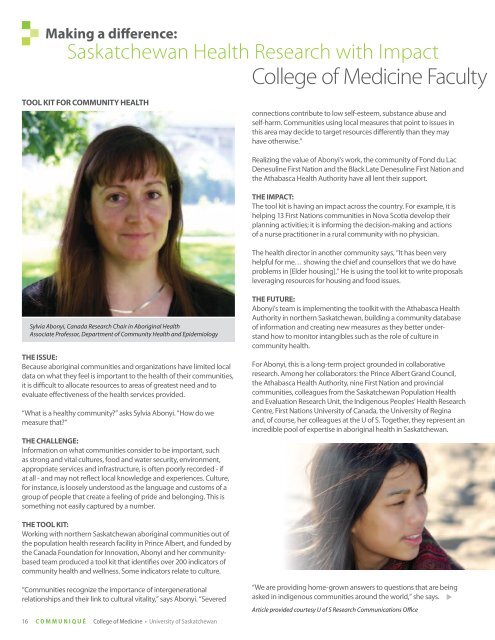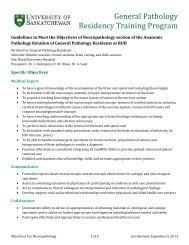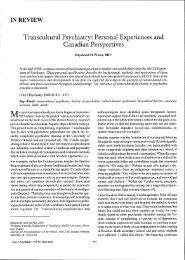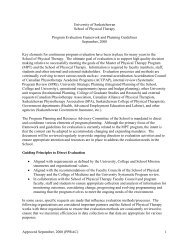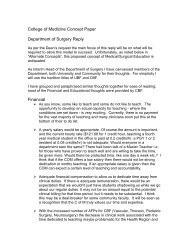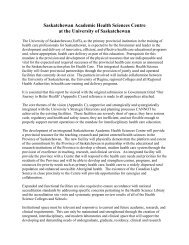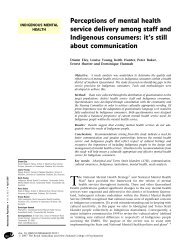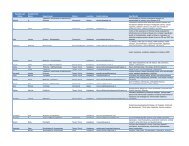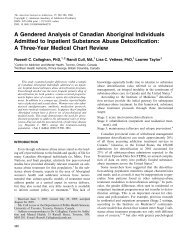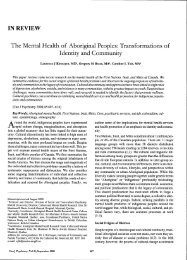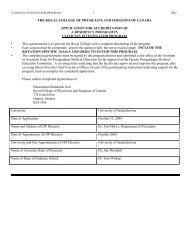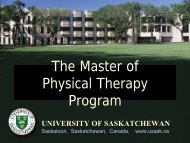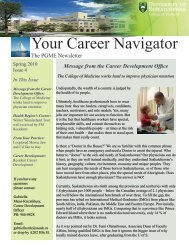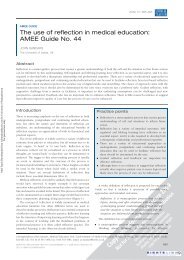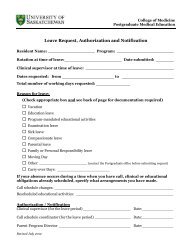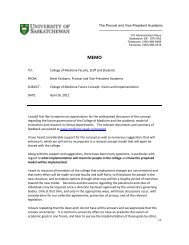Shaping Our Medical Education Journey - College of Medicine ...
Shaping Our Medical Education Journey - College of Medicine ...
Shaping Our Medical Education Journey - College of Medicine ...
Create successful ePaper yourself
Turn your PDF publications into a flip-book with our unique Google optimized e-Paper software.
Making a difference:<br />
Saskatchewan Health Research with Impact<br />
TOOl kIT FOR COMMUNITy HEAlTH<br />
Sylvia Abonyi, Canada Research Chair in Aboriginal Health<br />
Associate Pr<strong>of</strong>essor, Department <strong>of</strong> Community Health and Epidemiology<br />
THE ISSUE:<br />
Because aboriginal communities and organizations have limited local<br />
data on what they feel is important to the health <strong>of</strong> their communities,<br />
it is difficult to allocate resources to areas <strong>of</strong> greatest need and to<br />
evaluate effectiveness <strong>of</strong> the health services provided.<br />
“What is a healthy community?” asks Sylvia Abonyi. “How do we<br />
measure that?”<br />
THE CHAllENGE:<br />
Information on what communities consider to be important, such<br />
as strong and vital cultures, food and water security, environment,<br />
appropriate services and infrastructure, is <strong>of</strong>ten poorly recorded - if<br />
at all - and may not reflect local knowledge and experiences. Culture,<br />
for instance, is loosely understood as the language and customs <strong>of</strong> a<br />
group <strong>of</strong> people that create a feeling <strong>of</strong> pride and belonging. This is<br />
something not easily captured by a number.<br />
THE TOOl kIT:<br />
Working with northern Saskatchewan aboriginal communities out <strong>of</strong><br />
the population health research facility in Prince Albert, and funded by<br />
the Canada Foundation for Innovation, Abonyi and her communitybased<br />
team produced a tool kit that identifies over 200 indicators <strong>of</strong><br />
community health and wellness. Some indicators relate to culture.<br />
“Communities recognize the importance <strong>of</strong> intergenerational<br />
relationships and their link to cultural vitality,” says Abonyi. “Severed<br />
16 C O M M U N I Q U É <strong>College</strong> <strong>of</strong> <strong>Medicine</strong> • University <strong>of</strong> Saskatchewan<br />
<strong>College</strong> <strong>of</strong> <strong>Medicine</strong> Faculty<br />
connections contribute to low self-esteem, substance abuse and<br />
self-harm. Communities using local measures that point to issues in<br />
this area may decide to target resources differently than they may<br />
have otherwise.”<br />
Realizing the value <strong>of</strong> Abonyi’s work, the community <strong>of</strong> Fond du Lac<br />
Denesuline First Nation and the Black Late Denesuline First Nation and<br />
the Athabasca Health Authority have all lent their support.<br />
THE IMPACT:<br />
The tool kit is having an impact across the country. For example, it is<br />
helping 13 First Nations communities in Nova Scotia develop their<br />
planning activities; it is informing the decision-making and actions<br />
<strong>of</strong> a nurse practitioner in a rural community with no physician.<br />
The health director in another community says, “It has been very<br />
helpful for me… showing the chief and counsellors that we do have<br />
problems in [Elder housing].” He is using the tool kit to write proposals<br />
leveraging resources for housing and food issues.<br />
THE FUTURE:<br />
Abonyi’s team is implementing the toolkit with the Athabasca Health<br />
Authority in northern Saskatchewan, building a community database<br />
<strong>of</strong> information and creating new measures as they better under-<br />
stand how to monitor intangibles such as the role <strong>of</strong> culture in<br />
community health.<br />
For Abonyi, this is a long-term project grounded in collaborative<br />
research. Among her collaborators: the Prince Albert Grand Council,<br />
the Athabasca Health Authority, nine First Nation and provincial<br />
communities, colleagues from the Saskatchewan Population Health<br />
and Evaluation Research Unit, the Indigenous Peoples’ Health Research<br />
Centre, First Nations University <strong>of</strong> Canada, the University <strong>of</strong> Regina<br />
and, <strong>of</strong> course, her colleagues at the U <strong>of</strong> S. Together, they represent an<br />
incredible pool <strong>of</strong> expertise in aboriginal health in Saskatchewan.<br />
“We are providing home-grown answers to questions that are being<br />
asked in indigenous communities around the world,” she says.<br />
Article provided courtesy U <strong>of</strong> S Research Communications Office<br />
s


